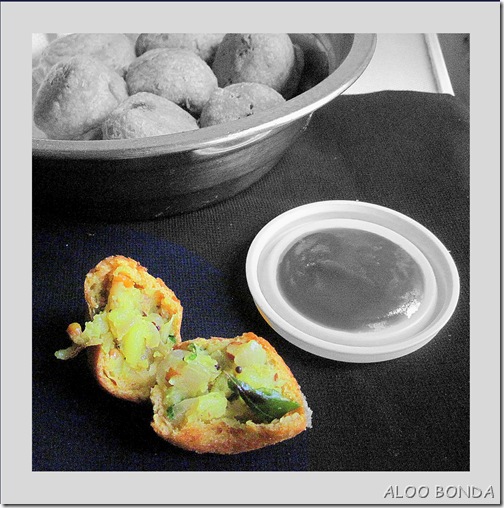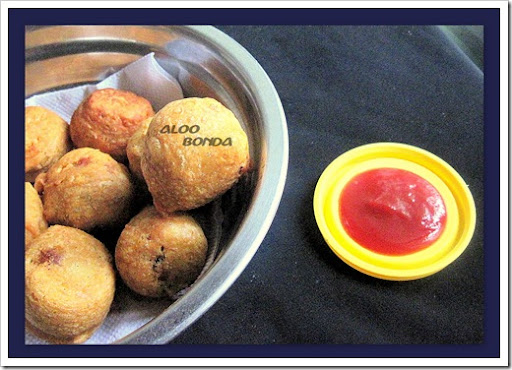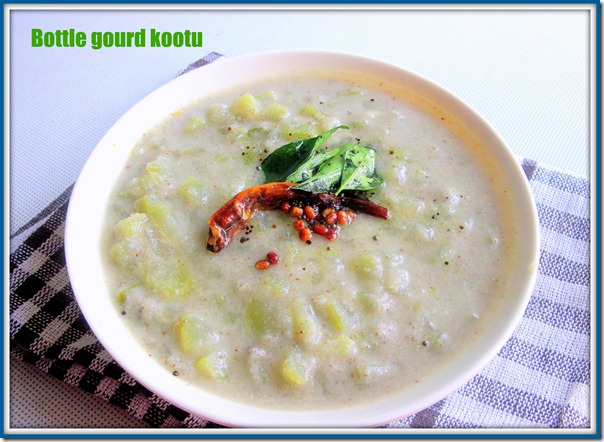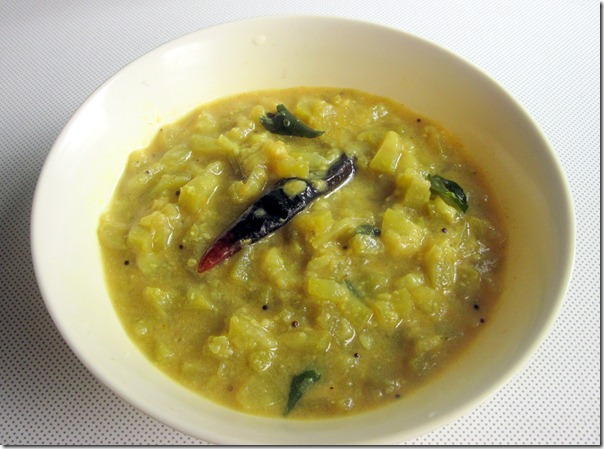miércoles, 30 de mayo de 2012
Sausage, potato and dill pasties
To tell the truth I'd completely forgotten about it but I do remember it being extremely tasty. It comes from my book Sausage and Mash and was inspired by one of The Ginger Pig's butchers Paul Hughes who told me they used to make a Swedish potato sausage flavoured with dill. Apparently there wasn't huge demand for it so they dropped it but it seemed a brilliant idea to me and one that would make a great filling for a pasty.
The pastry is really easy and well worth making from scratch. The technique comes from Delia Smith's Cookery Course, published back in 1978.
Makes 6 pasties
For the filling
425g new potatoes, scrubbed but not peeled
6 spring onions, trimmed and finely sliced
1 tbsp olive oil
25g butter
400g coarsely cut traditional pork sausages, at least 85% meat
2 rounded tbsp finely chopped dill (about 5g)
Salt and freshly ground black pepper
For the pastry
200g butter
50g vegetable shortening e.g. Cookeen or Trex (I think they still do it - if not use lard)
350g plain flour
1/2 tsp salt
6-8 tbsp iced water
1 medium egg, lightly beaten, for glazing
Measure out the butter and shortening for the pastry, wrap it in foil and put it in the freezer for half an hour.
Put the potatoes on to boil in boiling salted water. Cook for 7-8 minutes then drain.
Heat a large frying pan, add the oil then the butter. Fry the onion for a couple of minutes until softened then turn off the heat and roughly crush the potatoes into the pan. Season with salt and pepper and leave to cool.
When the fats are really cold, measure the flour and salt into a large bowl. Coarsely grate the semi-frozen butter and shortening into the flour, dipping each block into the flour as you go, and lightly working it in with a flat-bladed knife.
Cut the fat into the flour until it resembles coarse breadcrumbs then make a well in the centre and add about 5 tbsp of iced water. Work the pastry mix into the liquid and gradually pull the pastry together, adding as much extra liquid as you need to form a ball. Turn the pastry onto a floured board, pat into shape, put in a plastic bag and refrigerate for half an hour.
Take the sausages out of their skins, break up roughly and add to the potato mixture along with the dill. Take the pastry out of the fridge and divide into four. Roll out each portion thinly into a circle then cut round an 18cm plate or flan tin base, saving the offcuts. Pile 2 tbsp of filling into the centre of the circle and form it into a lozenge shape. Brush round the edges of the pastry with beaten egg. Bring the edges together in the middle, seal firmly then crimp to get a wavy line down the centre.
Repeat with the rest of the pastry then roll the offcuts to make two more pasties.
Refrigerate the pasties for at least 30 minutes then bake at 225°C/425°F/Gas 7 for 20 minutes. Turn the heat down to 190°C/375°F/Gas 5 and cook for another 30-35 minutes until the pasties are thoroughly cooked and well browned. Cool for at least half an hour before eating but don't refrigerate them.
jueves, 24 de mayo de 2012
http://feedproxy.google.com/~r/SpanishRecipesinpictures/~3/WFXLtuWwVM0/coca-de-llardons-cake-of-greaves.html
Get the rest in my blog! See you there!
lunes, 21 de mayo de 2012
Granola Berry Parfait Recipe

I can eat the same thing for breakfast day after day. Then suddenly I'm on to something else. At the moment, my breakfast of choice is a granola parfait. I bought parfait glasses for ice cream, but use them for breakfast and fruit salad more frequently. I also got those skinny spoons you need to fit down into the bottom of the glass! This is hardly a recipe, more of a technique. But anything that can help 'cereal' sound more exciting is worth doing. The trick to making a good parfait is to layer the ingredients nicely. Start with the yogurt on the bottom because anything else is too hard to get at with your spoon.
I've been using Driscoll's organic berries, Greek yogurt and The Bunnery granola. I recently got some samples of the granola and I really like it. I make my own granola but you have to eat it when it's fresh so I don't always have it on hand. The Bunnery original granola has relatively few ingredients just oats, honey, sunflower seeds, coconut, canola oil, sesame seeds, water, almonds, salt, cinnamon, and cloves. It's light and crunchy and not too clumpy which is best for parfaits.
You can make parfaits with just yogurt and fruit if you like. Or of course, you can also make parfaits with ice cream and fruit or sauces. But I think this is the best way to put a sexy spin on cereal. It's pretty, healthy and easy to make.
Berry Granola Parfaits
Mixed berries, such as blackberries, raspberries, blueberries
Yogurt, plain or flavored, regular or Greek
Granola
Layer a spoonful of yogurt into the bottom of the parfait glass and top with a layer of granola. Just a little! You want to make sure you leave enough room for multiple layers. Top the granola with one layer of berries. Repeat and end with a dollop of yogurt and a berry on top.
Enjoy!
domingo, 20 de mayo de 2012
http://feedproxy.google.com/~r/SpanishRecipesinpictures/~3/RsHGPzboCXg/duck-with-pears-aromatized-with-anise.html
Get the rest in my blog! See you there!
lunes, 14 de mayo de 2012
ALOO BONDA / URULAIKIZHANGU BONDA
Its my long time wish to try this bonda. I very rarely make deep fried snacks especially bhajji & bonda . But my husband is fond of all these fried stuffs.So last weekend i made this bonda for my hubby.He loved it. I was very happy with the result.
INGREDIENTS :
- FOR STUFFING
- Potato - 2 nos (medium sized )
- Green chilly - 1 no (finely chopped )
- Big onions - 1 no (-do-)
- Curry leaves - few
- Ginger - a small piece (Finely chopped)
- Salt & water - as reqd
To temper :
- Mustard seeds - 1/4 tsp
- Urad dal- 1/2 tsp
- Channa dal - 1/2 tsp
- Jeera - 1/4 tsp
To garnish
- Coriander leaves - few
Lime juice - A few drops
- FOR BATTER
- Gram flour - 6 tbsp
- Rice flour - 2 tsbp
- Cooking soda - a pinch (optional)
- Red chilly powder - 1 tsp]
- Hing - 2 generous pinches
- Salt & water - as reqd
METHOD :
- Pressure cook the potatoes ,by adding turmeric powder.Mash it and keep aside.
- In a kadai , temper the ingredients given above. Then add the onions , green chilly pieces & ginger.saute till onion turns transparent.
- Add the curry leaves and the mashed potato.Add little more turmeric powder if needed along with the required salt.
- Saute everything for sometime. It will become a thick mass .Finally mix in the coriander leaves & lime juice.
- Stuffing is ready. Make lemon sized balls out of the stuffing and start to prepare the batter.
- For the batter, take the gram flour , rice flour , red chilly powder , hing and salt in a wide bowl. Mix everything by adding little water and bring it to idly batter consistency.( Take care the batter should not be loose or watery.)
- Heat the oil in a kadai . Dip the lemon sized aloo stuffing in the batter and drop in the hot oil. Cook all the sides and remove. Deep fry all the bondas in batches.
Serve with tomato ketchup or coconut chutney !!
KITCHEN CLINIC :
| POTATO : Potatoes are a very popular food source. Unfortunately, most people eat potatoes in the form of greasy French fries or potato chips, and even baked potatoes are typically loaded down with fats such as butter, sour cream, melted cheese and bacon bits. Such treatment can make even baked potatoes a potential contributor to a heart attack. But take away the extra fat and deep frying, and a baked potato is an exceptionally healthful low calorie, high fiber food that offers significant protection against cardiovascular disease and cancer. Our food ranking system qualified potatoes as a very good source of vitamin C, a good source of vitamin B6, copper, potassium, manganese, and dietary fiber. Potatoes also contain a variety of phytonutrients that have antioxidant activity. Among these important health-promoting compounds are carotenoids, flavonoids, and caffeic acid, as well as unique tuber storage proteins, such as patatin, which exhibit activity against free radicals. Potatoes' Phytochemicals Rival Those in Broccoli Potatoes' reputation as a high-carb, white starch has removed them from the meals of many a weight-conscious eater, but this stereotype is due for a significant overhaul. A new analytical method developed by Agricultural Research Service plant geneticist Roy Navarre has identified 60 different kinds of phytochemicals and vitamins in the skins and flesh of 100 wild and commercially grown potatoes. Analysis of Red and Norkotah potatoes revealed that these spuds' phenolic content rivals that of broccoli, spinach and Brussels sprouts, and includes flavonoids with protective activity against cardiovascular disease, respiratory problems and certain cancers. Navarre's team also identified potatoes with high levels of vitamin C, folic acid, quercetin and kukoamines. These last compounds, which have blood pressure lowering potential, have only been found in one other plant, Lycium chinense (a.k.a., wolfberry/gogi berry). How much kukoamine is needed for a blood pressure lowering effect in humans must be assessed before it can be determined whether an average portion of potatoes delivers enough to impact cardiovascular health. Still, potatoes' phytochemical profiles show it's time to shed their starch-only image; spuds-baked, steamed or healthy sautéed but not fried-deserve a place in your healthy way of eating.'Phytochemical Profilers Investigate Potato Benefits,'Agricultural Research, September 2007 Blood-Pressure Lowering Potential UK scientists at the Institute for Food Research have identified blood pressure-lowering compounds called kukoamines in potatoes. Previously only found in Lycium chinense, an exotic herbal plant whose bark is used to make an infusion in Chinese herbal medicine, kukoamines were found in potatoes using a new type of research called metabolomics. Until now, when analyzing a plant's composition, scientists had to know what they were seeking and could typically look for 30 or so known compounds. Now, metabolomic techniques enable researchers to find the unexpected by analyzing the 100s or even 1000s of small molecules produced by an organism. 'Potatoes have been cultivated for thousands of years, and we thought traditional crops were pretty well understood,' said IFR food scientist Dr Fred Mellon, 'but this surprise finding shows that even the most familiar of foods might conceal a hoard of health-promoting chemicals.' Another good reason to center your diet around the World's Healthiest Foods! In addition to potatoes, researchers looked at tomatoes since they belong to the same plant family-Solanaceae-as Lycium chinense. Metabolomic assays also detected kukoamine compounds in tomatoes. The IFR scientists found higher levels of kukoamines and related compounds than some of the other compounds in potatoes that have a long history of scientific investigation. However, because they were previously only noted in Lycium chinense, kukoamines have been little studied. Researchers are now determining their stability during cooking and dose response (how much of these compounds are needed to impact health). Vitamin B6-Building Your Cells If only for its high concentration of vitamin B6-a cup of baked potato contains 21.0% of the daily value for this important nutrient-the potato earns high marks as a health-promoting food. Vitamin B6 is involved in more than 100 enzymatic reactions. Enzymes are proteins that help chemical reactions take place, so vitamin B6 is active virtually everywhere in the body. Many of the building blocks of protein, amino acids, require B6 for their synthesis, as do the nucleic acids used in the creation of our DNA. Because amino and nucleic acids are such critical parts of new cell formation, vitamin B6 is essential for the formation of virtually all new cells in the body. Heme (the protein center of our red blood cells) and phospholipids (cell membrane components that enable messaging between cells) also depend on vitamin B6 for their creation. Vitamin B6-Brain Cell and Nervous System Activity Vitamin B6 plays numerous roles in our nervous system, many of which involve neurological (brain cell) activity. B6 is necessary for the creation of amines, a type of messaging molecule or neurotransmitter that the nervous system relies on to transmit messages from one nerve to the next. Some of the amine-derived neurotransmitters that require vitamin B6 for their production are serotonin, a lack of which is linked to depression;melatonin, the hormone needed for a good night's sleep;epinephrine and norepinephrine, hormones that help us respond to stress; and GABA, which is needed for normal brain function. Vitamin B6-Cardiovascular Protection Vitamin B6 plays another critically important role in methylation, a chemical process in which methyl groups are transferred from one molecule to another. Many essential chemical events in the body are made possible by methylation, for example, genes can be switched on and turned off in this way. This is particularly important in cancer prevention since one of the genes that can be switched on and off is the tumor suppressor gene, p53. Another way that methylation helps prevent cancer is by attaching methyl groups to toxic substances to make them less toxic and encourage their elimination from the body. Methylation is also important to cardiovascular health. Methylation changes a potentially dangerous molecule called homocysteine into other, benign substances. Since homocysteine can directly damage blood vessel walls greatly increasing the progression of atherosclerosis, high homocysteine levels are associated with a significantly increased risk for heart attack and stroke. Eating foods rich in vitamin B6 can help keep homocysteine levels low. In addition, diets high in vitamin B6-rich foods are associated with overall lower rates of heart disease, even when homocysteine levels are normal, most likely because of all the other beneficial activities of this energetic B vitamin. A single baked potato will also provide you with 11.7% of the daily value for fiber, but remember the fiber in potatoes is mostly in their skin. If you want the cholesterol-lowering, colon cancer preventing, and bowel supportive effects of fiber, be sure to eat the potato's flavorful skin as well as its creamy center. Vitamin B6-Athletic Performance Vitamin B6 is also necessary for the breakdown of glycogen, the form in which sugar is stored in our muscle cells and liver, so this vitamin is a key player in athletic performance and endurance. |
martes, 8 de mayo de 2012
http://feedproxy.google.com/~r/blogspot/sBff/~3/uxLTanvnZXg/lettuce-entertain-you-and-get-to-know.html
 This quick and dirty video recipe for grilled romaine hearts was shot on location at Tanimura & Antle, a family-owned lettuce farm we toured as part of the Get to Know a California Farmer field trip Michele and I just returned from in Carmel, CA.
This quick and dirty video recipe for grilled romaine hearts was shot on location at Tanimura & Antle, a family-owned lettuce farm we toured as part of the Get to Know a California Farmer field trip Michele and I just returned from in Carmel, CA.  After the tour we were treated to a wonderful lunch showing off some of the farm's famous foliage. The grilled romaine salad you'll see in the video was a big hit, but we also had some beautiful pizzas, as you can see below. It always feels special to eat produce that was just picked hours before.
After the tour we were treated to a wonderful lunch showing off some of the farm's famous foliage. The grilled romaine salad you'll see in the video was a big hit, but we also had some beautiful pizzas, as you can see below. It always feels special to eat produce that was just picked hours before. You'll also see a short video I did showing how the lettuce goes from dirt to final packaging on this slow-rolling mobile processing plant. You'll have to pardon the dirty lens, as I hadn't planned on filming in the field, and never checked it. I believe the smudge is gumbo, but there's really no way to tell for sure. Don't let that deter you, or you'll miss a cameo by social media guru, Jay Baer, on a bed of lettuce.
You'll also see a short video I did showing how the lettuce goes from dirt to final packaging on this slow-rolling mobile processing plant. You'll have to pardon the dirty lens, as I hadn't planned on filming in the field, and never checked it. I believe the smudge is gumbo, but there's really no way to tell for sure. Don't let that deter you, or you'll miss a cameo by social media guru, Jay Baer, on a bed of lettuce. After lunch we got to tour Naturipe Farms, one of the largest berry producers in the state. Our guide, Tom, did a great job of explaining all the challenges that go into growing berries, especially strawberries. I learned that organic doesn't mean that no pesticides are used. They just need to be certified pesticides, and are often the same ones used in conventional farming. The highlight for me was his explaining how fish meal is regularly used to fertilize organic strawberries, unbeknownst to most vegans we assumed.
After lunch we got to tour Naturipe Farms, one of the largest berry producers in the state. Our guide, Tom, did a great job of explaining all the challenges that go into growing berries, especially strawberries. I learned that organic doesn't mean that no pesticides are used. They just need to be certified pesticides, and are often the same ones used in conventional farming. The highlight for me was his explaining how fish meal is regularly used to fertilize organic strawberries, unbeknownst to most vegans we assumed. Anyway, it was a really fun trip, and I want to thank Adfarm and Get to Know a California Farmer for inviting us. Also, huge thanks to the farmers who shared their stories and delicious products with us. For more information on Get to Know a California Farmer, please check out their website! It's a fantastic way to connect directly with the people growing the food you put on your tables every day.
Anyway, it was a really fun trip, and I want to thank Adfarm and Get to Know a California Farmer for inviting us. Also, huge thanks to the farmers who shared their stories and delicious products with us. For more information on Get to Know a California Farmer, please check out their website! It's a fantastic way to connect directly with the people growing the food you put on your tables every day. How Lettuce is Harvested
sábado, 5 de mayo de 2012
http://feedproxy.google.com/~r/SpanishRecipesinpictures/~3/dbinP2pCP1s/rolled-cucumber-salad.html
Get the rest in my blog! See you there!
http://feedproxy.google.com/~r/SpanishRecipesinpictures/~3/XTklfXcqUrU/empedrat-beans-and-cod-salad.html
Get the rest in my blog! See you there!
jueves, 3 de mayo de 2012
SORAKKAI SWEET KOOTU & PAAL KOOTU/ BOTTLE GOURD GRAVY- TWO VERSIONS
I learnt this from my MIL.. We are not find of this vegetable. So i buy bottle gourd very rarely. But whenever i buy , i make only this kootu. With vathakuzhambu , it tastes divine… I've given a spicy version too. But my vote goes to the sweet version
Love it a lot..!!
INGREDIENTS
To grind
To temper
Milk (optional) at the end .. |
METHOD
|
Enjoy with Vathakulambu rice and papad !!
SORAKKAI PAAL KOOTU
To grind
To temper
MILK – LITTLE AT THE END |
METHOD
Enjoy with rice and papad ! |
KITCHEN CLINIC
| Bottle gourd The bottlegourd belongs to the cucumber family and originated in Africa, and is now available in most parts of the world. Also known as calabash, cucuzza, sorakaya, lauki, doodhi, and ghiya in various languages, this vegetable comes in different shapes, the most common being the bottle-shaped (hence the name) and round. HEALTH BENEFITS Bottlegourd contains a lot of water - almost 96 percent is water, and as such is light and easy to digest. Bottlegourd is commonly used for treating indigestion, constipation, and diarrhea. Bottlegourd juice with a pinch of salt is also used to treat dehydration caused by diarrhea. Cooking Tips
|








